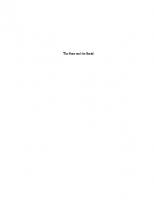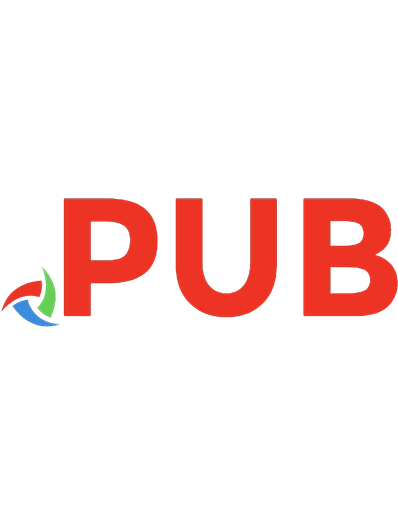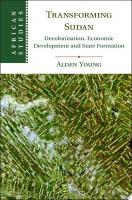Oromia and Ethiopia: State Formation and Ethnonational Conflict, 1868-1992 9781685855772
This original work traces the cultural and political history of the Oromo, their incorporation into the modern state of
151 79 16MB
English Pages 300 [248] Year 2023
Polecaj historie
Table of contents :
Contents
List of Illustrations
Preface
Introduction
1 Precolonial Oromia, 1500-1850
2 Ethiopia: National Identity and Social Formation
3 European Imperialism and Ethiopian Colonialism: The Politics of Empire Building, 1850-1935
4 Colonial Capitalism, Hegemonism, and Contradictions, 1935-1974
5 Revolutionary Crises and Colonial Reorganization, 1974-1984
6 The Politics of Famine and New Colonial Programs
7 From Resistance to the Struggle for Decolonization
8 The Politics of Change, Accommodation, and Liberation
Bibliography
Index
About the Book and Author
Citation preview
Oromia & Ethiopia
Oromia & Ethiopia State Formation and Ethnonational Conflict, 1868-1992
Asafa Jalata
Lynne Rienner Publishers • Boulder & London
Published in the United States of America in 1993 by Lynne Rienner Publishers, Inc. 1800 30th Street, Boulder, Colorado 80301 and in the United Kingdom by Lynne Rienner Publishers, Inc. 3 Henrietta Street, Covent Garden, London WC2E 8LU © 1993 by Lynne Rienner Publishers, Inc. All rights reserved Library of Congress Cataloging-in-Publication Data Jalata, Asafa, 1954Oromia and Ethiopia : state formation and ethnonational conflict, 1868-1992 / by Asafa Jalata. p. cm. Includes bibliographical references. ISBN 1-55587-425-8 (alk. paper) 1. Ethiopia—Politics and government. 2. Ethiopia—Ethnic relations. 3. Oromo (African people)—Politics and government. I. Title. DT386.3.J35 1993 963—dc20 93-32 CIP
British Cataloguing in Publication Data A Cataloguing in Publication record for this book is available from the British Library.
Printed and bound in the United States of America The paper used in this publication meets the requirements of the American National Standard for Permanence of Paper for Printed Library Materials Z39.48-1984.
To my father, Jalata Bidu, and the memory of my mother, Amalo Arariso
Contents
List of Illustrations Preface
ix xi
Introduction
1
1
Precolonial Oromia, 1500-1850
15
2
Ethiopia: National Identity and Social Formation
31
3
European Imperialism and Ethiopian Colonialism: The Politics of Empire Building, 1850-1935
47
Colonial Capitalism, Hegemonism, and Contradictions, 1935-1974
83
4
5
Revolutionary Crises and Colonial Reorganization, 1974-1984
115
6
The Politics of Famine and New Colonial Programs
135
7
From Resistance to the Struggle for Decolonization
151
8
The Politics of Change, Accommodation, and Liberation
177
Bibliography Index About the Book and Author
203 221 233
vii
Illustrations
Maps Sketch Map of East Africa in the Mid-1850s Modern Oromia
4 5
Figures 1.1
Oromo Genealogy (selected)
17
ix
Preface
This book is about the Oromo nation and its relations with Ethiopia and Ethiopia's supporters. Writing this book has been difficult. To write about the Oromo people is an uphill struggle because Oromo history, culture, and civilization have been victimized by Ethiopian! colonialism and the imperial interstate system for more than a century; until recently the world did not even recognize the existence of Oromia and its people. Because of the lack of political power, the history of this largest ethnonation in the Horn of Africa was not known. Furthermore, in a world that has been dominated by white imperialist powers, it is difficult for people to understand that Ethiopia, a poor black nation, can colonize and victimize another black nation, Oromia—therefore, understanding the Oromo question requires a critical study of the evolution of the modem world system and power relations within the system. This book explores chains of historical factors that led to the colonization of Oromia and the emergence of the Oromo national movement. In writing this book, in addition to using primary and secondary sources, I relied on personal knowledge. I was born and raised in Oromia, and experienced the brutality of Ethiopian colonialism. I learned Oromo history and culture from my family, and Ethiopian history and culture in Ethiopian schools. I studied and worked in different parts of Oromia, and I have also participated in the Oromo national movement both in Oromia and abroad. I have understood the dilemma of the oppressed Ethiopian masses; and hence I feel the pain and suffering of all peoples that have been exploited, oppressed, and dehumanized by the Ethiopian state and its EuroAmerican supporters. f T h e Habasha and the Oromo were the major ethnic groups in what is now the Horn of A f r i c a when the Europeans started colonizing A f r i c a in the nineteenth century. The Habasha, favored by the Europeans, in effect allied themselves with the colonists, creating an Ethiopian ruling class. The ruling class brought the human and economic resources of the other colonized populations under control in the last decades of the nineteenth century. I use the term "Ethiopians" to refer to the Habasha only.
xi
xii
Preface
My dedication to human rights, national rights, social justice, and democracy impelled me to leave my parents and people and live in exile in a totally new culture and country. One of the positive things that has come out of this is the writing of this book, which I began in the late 1980s, when I was a graduate student at State University of New York, Binghamton. During that time, I met some critical scholars who are theoretically and methodologically sophisticated and intellectually rigorous; particularly, Professors Terence K. Hopkins, James F. Petras, Mark Selden, and Martin J. Murray, who read parts of my manuscript and provided critical comments and suggestions. These four outstanding scholars challenged me to critically and thoroughly address several issues regarding the Oromo people and their relationship with Ethiopia and the capitalist world economy. I would like to acknowledge the encouragement and intellectual support they provided me. I am also deeply grateful to two anonymous readers of the manuscript who provided me with some suggestions that helped me to further improve this work. Martha L. Peacock, acquisitions editor at Lynne Rienner Publishers, deserves special thanks. Gia Hamilton and Ida May Norton must be thanked for their help. I am also very grateful to other individuals who contributed to this work one way or the other. The research materials I received from Bonnie Holcomb, who allowed me to use her personal library, and Mohammed Hassen were very helpful. Aberra Tefera showed a special interest in this work, and spent his money and time in locating and obtaining for me valuable research materials not easily accessible. Hailu Kenno conducted some interviews for me. Abdurashid Abdurahaman and his wife, Sa'ada, helped me in identifying and interviewing knowledgeable Oromos in Canada; and they also provided me and my family with generous hospitality. The following persons also deserve my thanks for providing me some documents: L u b e B i r u , Sisai Ibssa, B a i s s a L e m m u , S i d n e y W a l d r o n , C h a r l e s McClellan, Addisu Tolesa, Abdulhamid Ahmed, Humdesa Tuso, Paul Baxter, Ibssa Ahmed, Gonfa T. Seta, Redwan Abdurahaman, and Wolde Yohannis Hunde. I would also like to thank Karen Jones, Virginia Carey, and Marzella Allen for typing some parts of the manuscript. Further, I extend my thanks to the Department of Sociology at the University of Tennessee for their assistance. The values that my parents, Jalata Bidu and Amalo Arariso, instilled in me are reflected in this book. They taught me that all human beings deserve equal treatment and dignity. I also remember those revolutionary Oromo scholars and oppressed Oromo farmers who influenced my intellectual interest and direction. Finally, I am very grateful to my wife, Zeituna Kalil, who constantly encouraged and motivated me in writing this book. Zeituna has increased the depth of my understanding about the Oromo refugees who have been suffering in d i f f e r e n t countries; she also thoroughly explained to me the suffering of the Oromo women under Ethiopian colo-
Preface
xiii
nialism. Realizing the importance of this book, she took the sole responsibility of taking care of Beka and Kulani (our son and daughter) while I was writing. My wife and children deserve many thanks for their patience and understanding. Asafa Jalata
Introduction
The main purpose of this book is to examine how Oromia was incorporated into Ethiopia and the world economy, the origin of Oromo nationalism, and the development and current status of the Oromo national movement. The process of incorporation shows how imperialism penetrated the Horn of Africa and allied with successive Ethiopian colonial ruling classes from the last decades of the nineteenth century. Christian ideology, geopolitics, and the processes of class differentiation and state formation in Ethiopia proper allowed the Amhara-Tigrayan rulers to seek and establish alliances with the European colonial powers and colonize the Oromo and other peoples in order to exploit their economic and human resources. Thus, explored here are Ethiopian dependent colonialism, nationally based inequalities, and the struggle of Oromia for national self-determination. A primary theme of this study is that the creation, maintenance, and intensification of nation-class contradictions since the formation of the Ethiopian Empire constitute the fundamental problems between the Oromo and the Ethiopians. By allying with European imperialism and colonizing various independent peoples (such as the Sidama, Afar, Kafa, Hadiya, Walayita, Konso, Somali, and others), the Ethiopian colonial ruling class created this empire and brought the human and economic resources of the colonized populations under its control. Of the 52 million people in this empire today, the Oromo comprise about 50 percent. 1 Despite their numerical strength, the Oromo have been colonial subjects, treated as second-class citizens and deprived of their political and economic privileges just as have other colonized minorities. European imperialism and Ethiopian settler colonialism intensified the process of wealth and capital accumulation by means of plunder and noncapitalist and capitalist labor-recruitment systems. The Ethiopian Empire was further built and maintained by the alliance of the Ethiopian colonial ruling class with two successive hegemonic powers—Great Britain and the United States. Euro-American imperialism 1
2
Oromia & Ethiopia
i n t r o d u c e d capitalism and p r e s e r v e d the old political s t r u c t u r e in this empire. England and the United States were involved mainly because of their geopolitical interests. This dominant role was played, for similar purposes, by the Soviet Union in the 1970s and the 1980s. However, this shift in alliance from the West to the East, necessitated by the crisis the empire experienced in the 1970s, changed the nature of Ethiopian colonialism only in the reorganization and reconsolidation of the Ethiopian colonial state, and in that colonial subjects were oppressed and exploited more intensely. This was accomplished by creating new colonial institutions, such as military-controlled mass associations and settlement villages, known f o r their massive human rights violations. T h e convergence of longstanding contradictions with c o n t e m p o r a r y political crisis has provided new momentum for the Oromo national movement. T h e colonial state reorganization could not c h a n g e the nature of Ethiopian colonialism—still blocked were the processes of national selfdetermination, decolonization, and democratization—and thus the Oromo have continued their national liberation struggle. The maturation of ethnonational liberation movements (the Oromo, Eritrean, and Tigrayan liberation movements) in the 1980s, the crisis in the military leadership and the change in international politics led to the collapse of Colonel Mengistu Haile Mariam's regime in May 1991. Among other things, the close collaboration between the Eritrean and the Tigrayan movements and the support the Tigrayan People's Liberation Front (TPLF) received from the United States and the Sudan enabled the T P L F to organize its subsidiary organizations and replace the military government. The emergence of the Tigrayanled government in 1991 temporarily introduced some cosmetic c h a n g e s without resolving the Oromo question. Since the Oromo Liberation Front (OLF) adopted the position of a peaceful approach to enable the Oromo people to decide their political destiny through democracy, it joined the Tigrayan-led government as a junior partner for almost a year. The collapse of the military regime, the seizing of E t h i o p i a n state power by the Tigrayan-led Ethiopian People's Revolutionary Democratic Front (EPRDF), the formation of the EPRDF-led coalition government, and the current crisis of the coalition government due to the withdrawal of the O L F have manifested a paradox: political change and continuity. On the one hand, the adoption of a transitional charter p r o v i d i n g basic h u m a n rights, freedom of association and expression, the right of ethnonations to self-determination, and the formation of a democratic state indicated political change. On the other hand, the domination of the transitional government by the T P L F and the blockage of district and regional elections in June 1992 clearly showed the continuity of Ethiopian colonial politics. The attempt to substitute Tigrayan for Amhara ethnic hegemony indicated the impossibility of democratizing this empire without decolonizing and trans-
Introduction
3
forming it. That is why the OLF has resumed its protracted armed struggle against Ethiopian colonialism.
Oromia and Ethiopia Defined For the purpose of this study, and to clarify certain controversies, some historical and political definitions of the names "Oromia" and "Ethiopia" are needed. The Oromo used to call their country "Biiya O r o m o o . " Although the Oromo never called themselves "Galla," the Ethiopians and their international counterparts called them by this name. T h e practice continued until the Oromo began their national liberation struggle and started to have an impact on shaping their own destiny and history. We d o not know who originated the name Galla, only that it obtained currency through the writings of Ethiopian religious scholars and colonial a g e n t s such as A b b a Bahrey. 2 W h e n Lewis Krapf drew the m a p of east A f r i c a b e t w e e n 1837 and 1855, he gave the name "Ormania" to the Oromoland (see M a p 1.1) and openly stated the importance of colonizing it: "What a noble land would Ormania be if it were under the influence of Christianity and European culture! What a pity that the course of our emigration is not directed to those regions! No doubt the time will come, when the stream of European enterprise which now flows toward America and Australia shall be exhausted." 3 K r a p f ' s political prediction was realized by the alliance of European imperialism and Ethiopian colonialism during the division of Africa, when the Oromo were partitioned between Ethiopia and Great Britain. In the early 1970s, the Oromo Liberation Front began to use the name Oromia 4 instead of Ormania or Biiya O r o m o o (see M a p 1.2). According to Baxter, "the name 'Oromia' has been created by young Oromo nationalists for the independent state to which they aspire. . . . The name Oromia thus serves the s a m e p u r p o s e and is as j u s t i f i e d as ' G h a n a , ' ' B e n i n , ' ' M a l i , ' a n d ' Z i m b a b w e . ' " 5 In this book, the name Oromia is used interchangeably with the Oromo nation and also indicates the geographical location of the nation in t h e H o r n of A f r i c a . O r o m i a c o m p r i s e s a l m o s t t h r e e - f o u r t h s of t h e Ethiopian Empire, on which this study focuses, although there are also Oromo branches in northern Kenya. T h e n a m e E t h i o p i a o r i g i n a t e d with the G r e e k w o r d " A e t h i o p e s . " Classical Greek explorers and writers gave this n a m e to the territories inhabited by black peoples in Asia and Africa. 6 Later, through the process of translating the Bible from Hebrew to Greek and from Greek to Geez (the ancient Abyssinian language), the n a m e Ethiopia came to be associated with Abyssinia; Abyssinia was j u s t a part of the world that the G r e e k classical writers called Ethiopia. 7 H e n c e E t h i o p i a and A b y s s i n i a w e r e
4
Oromia & Ethiopia
Sketch M a p of East Africa in the Mid-1850s
Source: J. Lewis Krapf, Travels, Researches, and Missionary Labours in East Africa (London: Frank Cass & Co. Ltd., 1968). Reprinted with permission.
Introduction
Modern Oromia
ERITREA
SUDAN Gondar AFAR AB YSSINIA/ETOIOPIA Gojjam Bclashangll Addis Ababa iambella Kambata Omotic Peoples
OGADEN
.Walaila
SOMALIA
KENYA
Source: The Oromo Commentary 1991. Reprinted with permission.
5
6
Oromia










